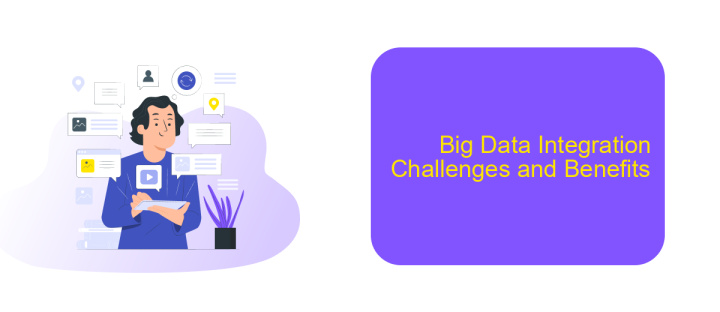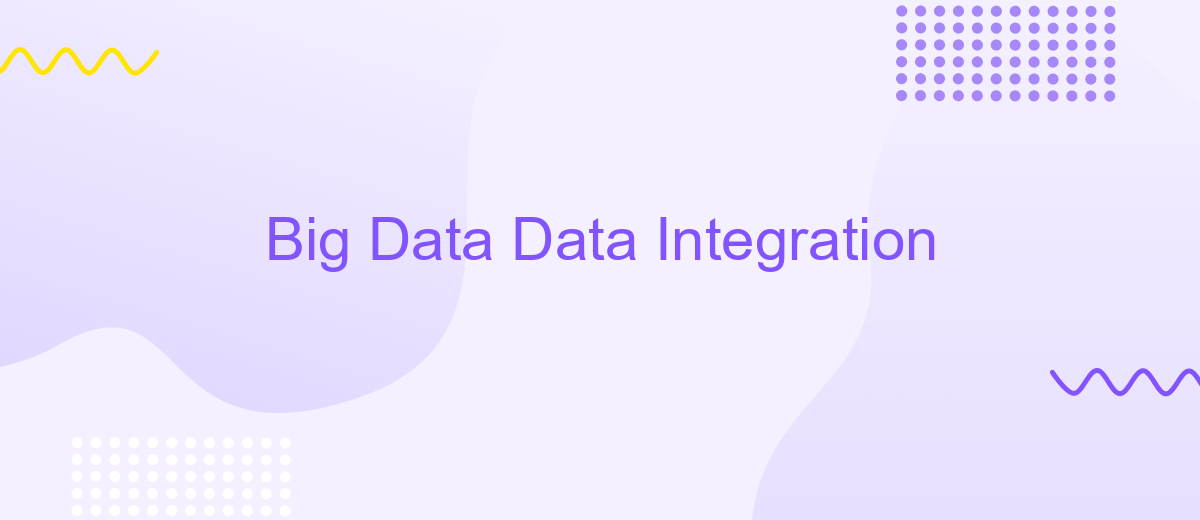Big Data Data Integration
Big Data Data Integration is a crucial process in modern data management, enabling organizations to consolidate vast amounts of diverse data from various sources. This integration not only enhances data accessibility and quality but also drives informed decision-making and innovation. By seamlessly combining structured and unstructured data, businesses can unlock valuable insights and gain a competitive edge in today's data-driven world.
Introduction
Big Data Data Integration is an essential aspect of modern data management, enabling organizations to combine data from diverse sources into a unified view. This process is crucial for making informed business decisions, enhancing operational efficiency, and gaining competitive advantages. As the volume, variety, and velocity of data continue to grow, effective data integration strategies become increasingly vital.
- Combining structured and unstructured data from multiple sources
- Ensuring data quality and consistency across systems
- Facilitating real-time data access and analysis
- Leveraging cloud-based platforms for scalable integration
- Utilizing automation tools like ApiX-Drive for seamless workflow integration
With tools like ApiX-Drive, organizations can automate the data integration process, reducing manual effort and minimizing errors. ApiX-Drive offers a user-friendly interface and robust features that allow businesses to connect various applications and services effortlessly. By streamlining data integration, companies can focus on deriving valuable insights and driving innovation, ultimately leading to better decision-making and improved business outcomes.
Challenges of Big Data Integration

Big Data integration presents numerous challenges, primarily due to the sheer volume, velocity, and variety of data being generated. One of the most significant issues is ensuring data quality and consistency across disparate sources. Data from different origins may have varying formats, structures, and levels of accuracy, making it difficult to consolidate into a unified dataset. Additionally, real-time data integration requires robust infrastructure and sophisticated algorithms to process and analyze data streams without latency, which can be both technically demanding and costly.
Another major challenge is the security and privacy of the integrated data. With the increasing amount of sensitive information being processed, ensuring compliance with regulations such as GDPR and CCPA is crucial. Moreover, the integration process itself can be complex and time-consuming, often requiring specialized tools and expertise. Services like ApiX-Drive can simplify this process by offering automated data integration solutions that connect various applications and platforms. These tools can help manage data flows efficiently, reduce manual efforts, and ensure data accuracy, ultimately facilitating smoother and more secure Big Data integration.
Integration Techniques and Tools

Big Data integration involves combining data from different sources to provide a unified view. This process is essential for comprehensive data analysis and informed decision-making. Numerous techniques and tools are available to facilitate this integration, each with its unique advantages and use cases.
- ETL (Extract, Transform, Load): This traditional method involves extracting data from various sources, transforming it to fit operational needs, and loading it into a data warehouse.
- Data Virtualization: This technique allows users to access and manipulate data without needing to know the physical storage location, providing real-time integration.
- API Integration: Tools like ApiX-Drive enable seamless integration between different applications through APIs, automating data flow and reducing manual intervention.
- Stream Processing: This method processes data in real-time as it is generated, which is ideal for time-sensitive applications.
- Data Lakes: This approach stores raw data in its native format, allowing for flexible data processing and integration at a later stage.
Choosing the right integration technique depends on the specific requirements and constraints of your data environment. Tools like ApiX-Drive can simplify the integration process by offering automated and customizable solutions, ensuring efficient and reliable data flow across various platforms.
Big Data Integration Challenges and Benefits

Integrating big data from multiple sources presents numerous challenges, including data variety, volume, and velocity. Ensuring data consistency and quality across diverse datasets can be complex and time-consuming. Additionally, integrating real-time data streams requires robust infrastructure and sophisticated tools to handle high-speed data ingestion.
Despite these challenges, successful big data integration offers substantial benefits. It enables organizations to gain comprehensive insights by combining data from various sources, leading to more informed decision-making. Enhanced data accuracy and consistency also improve operational efficiency and customer satisfaction.
- Improved decision-making through comprehensive data analysis
- Increased operational efficiency and reduced costs
- Enhanced data quality and consistency
- Real-time insights for timely actions
Services like ApiX-Drive simplify the integration process by providing automated workflows and seamless data transfers between different platforms. By leveraging such tools, organizations can overcome integration challenges and fully realize the benefits of their big data initiatives.


Real-World Applications
Big Data integration has found numerous applications across various industries, providing significant value by enabling better decision-making and operational efficiency. In healthcare, integrated data from electronic health records, wearable devices, and genomics allows for personalized treatment plans and predictive analytics to improve patient outcomes. In finance, integrating data from transactions, social media, and market trends helps in fraud detection, risk management, and personalized financial services.
One of the key challenges in Big Data integration is the seamless connection of disparate data sources. Services like ApiX-Drive facilitate this process by offering a platform that automates the integration of various applications and databases. This allows businesses to streamline data workflows without extensive coding, ensuring that data from CRM systems, marketing platforms, and other tools are synchronized and accessible in real-time. Such integrations are crucial for maintaining data accuracy and enhancing the overall efficiency of business operations.
FAQ
What is Big Data integration?
Why is Big Data integration important?
What are the common challenges in Big Data integration?
How can automation help in Big Data integration?
What should be considered when choosing a Big Data integration tool?
Do you want to achieve your goals in business, career and life faster and better? Do it with ApiX-Drive – a tool that will remove a significant part of the routine from workflows and free up additional time to achieve your goals. Test the capabilities of Apix-Drive for free – see for yourself the effectiveness of the tool.

